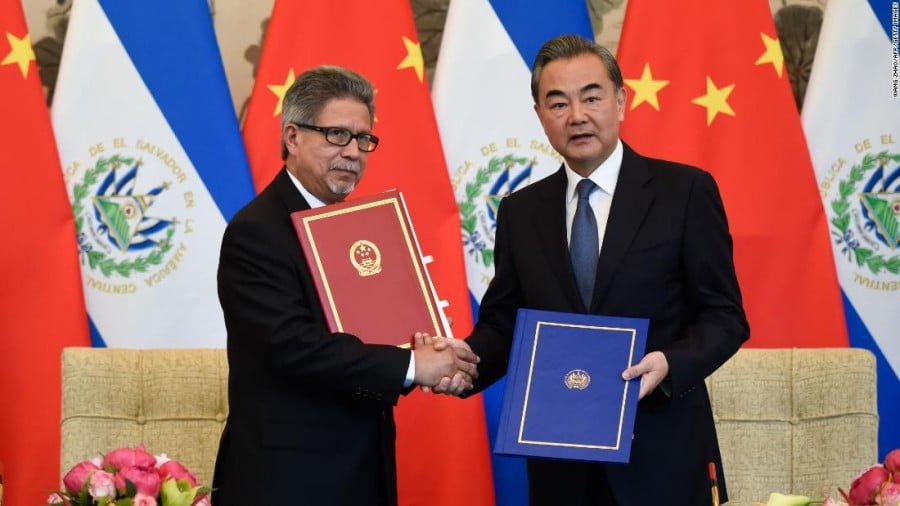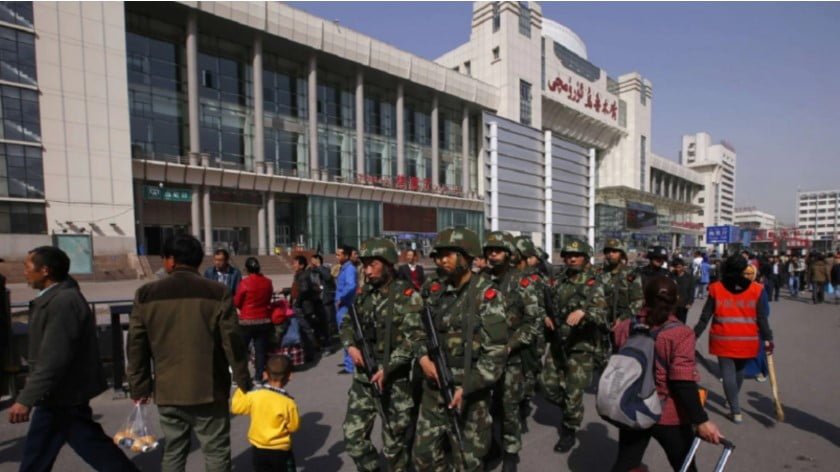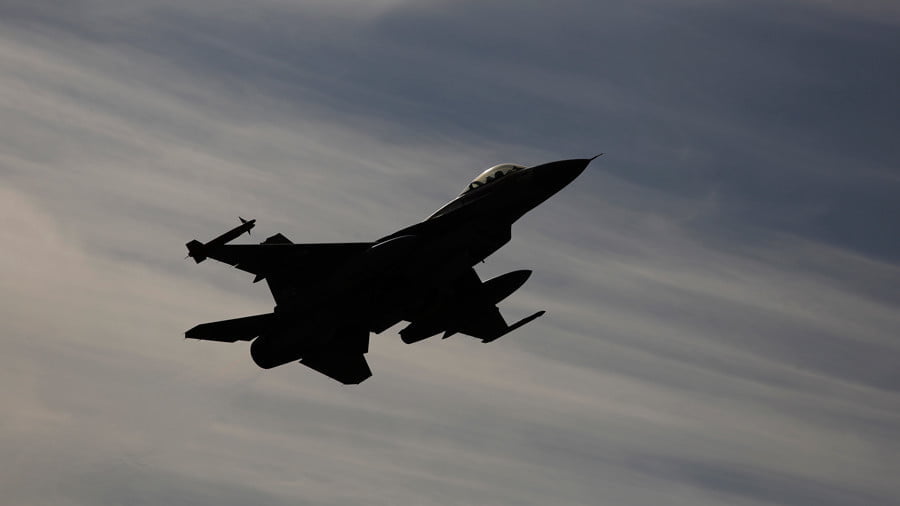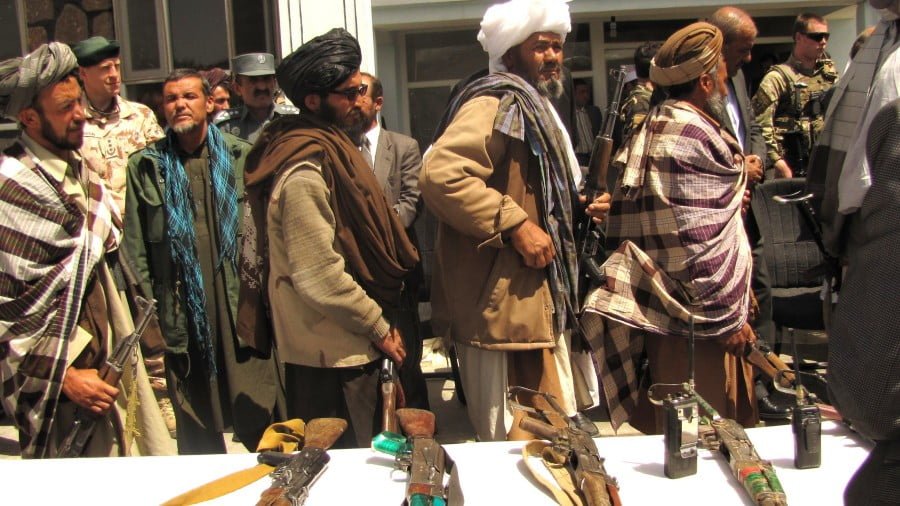Washington’s Shifting Taiwan Policy Aims for an Asian “Ukraine”
The United States is openly talking about its arming of Taiwan no longer in general terms of ensuring “sufficient self-defense,” but rather specifically to “win against China,” thus confirming Beijing’s longstanding claims that Washington has been provoking conflict in what is China’s internal political affairs recognized as such by even the US and its official recognition of the One China Policy.
The New York Times in a May 7, 2022 article titled, “US Presses Taiwan to Buy Weapons More Suited to Win Against China,” would claim:
The Biden administration is quietly pressing the Taiwanese government to order American-made weapons that would help its small military repel a seaborne invasion by China rather than weapons designed for conventional set-piece warfare, current and former US and Taiwanese officials say.
The article also claims:
The US campaign to shape Taiwan’s defenses has grown in urgency since the full-scale Russian invasion of Ukraine ordered in late February by President Vladimir V. Putin. The war has convinced Washington and Taipei that a Chinese invasion of Taiwan in the coming years is now a potential danger — and that a smaller military with the right weapons that has adopted a strategy of asymmetric warfare, in which it focuses on mobility and precision attacks, can beat back a larger foe.
In reality, after 8 years of intense training of over 23,000 Ukrainian forces and the transfer of billions of dollars worth of arms, Ukraine is no more able to repel Russian military operations amid the current conflict there than Taiwan will be able to do in any future conflict with the mainland even with Washington’s “re-examination” of Taiwan’s military capabilities and the adjustment of arms shipped to the breakaway island province.
The New York Times, like the vast majority of the Western media, claims that Ukraine has “defeated” Russia in critical battles, citing Kiev. In reality, the same Ukrainian military the US and NATO spent 8 years arming and training was unable to stop Russia from securing cities from Kherson in Ukraine’s south all the way to the Donbas region, creating a land bridge from Crimea to the Russian Federation’s borders. Among these cities includes Mariupol, presenting another example of Ukraine’s military failing in combat despite the extensive training and arms transfers the US military and its Western allies provided Ukraine since 2014.
Ukraine’s military is also clearly unable to prevent Russia from shaping the battlefield across the Donbas region, preparing for the encirclement and either destruction or capture of tens of thousands of Ukrainian forces along the line of contact between them and the militias of the Donbas region.
Taiwan is a fraction of the size, population, and military strength of Ukraine. Nothing the United States and its allies can do will ever change that nor the fact that each passing year the Chinese mainland’s military capabilities grow by leaps and bounds not only in terms of securing their own domestic objectives, but obtaining or surpassing military parity with the United States.
While Western publications like the New York Times claim that Washington’s strategy of arming and training Taiwanese forces is meant to defend the island, in reality it is merely meant to bleed China at Taiwan’s expense and entirely on Washington’s behalf – not unlike what is playing out in Ukraine right now.
While the White House publicly denies it is waging a proxy war with Russia through Ukraine it is abundantly obvious that from 2014 onward, that is precisely what Washington prepared for and exactly what Washington is doing now. This has been openly admitted by sitting US representatives.
US Congressman Daniel Crenshaw, for example, in response to criticism for his vote on $40 billion in aid to Ukraine openly claimed:
Investing in the destruction of our adversary’s military, without losing a single American troop, strikes me as a good idea.
Thus, just as Washington attempts to fight Russia to the last Ukrainian in Eastern Europe, the US is openly preparing the battlefield in the Indo-Pacific region to fight China to the last inhabitant of Taiwan.
Washington’s Shifting “One China Policy”
In May of last year and for many years before that, upon the US State Department’s own website (archived) regarding US-Taiwan relations, the US State Department would explicitly note:
The United States and Taiwan enjoy a robust unofficial relationship. The 1979 U.S.-P.R.C. Joint Communique switched diplomatic recognition from Taipei to Beijing. In the Joint Communique, the United States recognized the Government of the People’s Republic of China as the sole legal government of China, acknowledging the Chinese position that there is but one China and Taiwan is part of China.
The same webpage would also note:
The United States does not support Taiwan independence. Maintaining strong, unofficial relations with Taiwan is a major U.S. goal, in line with the U.S. desire to further peace and stability in Asia. The 1979 Taiwan Relations Act provides the legal basis for the unofficial relationship between the United States and Taiwan, and enshrines the U.S. commitment to assist Taiwan in maintaining its defensive capability. The United States insists on the peaceful resolution of cross-Strait differences, opposes unilateral changes to the status quo by either side, and encourages both sides to continue their constructive dialogue on the basis of dignity and respect.
Washington’s recognition of the One China Policy in 1979 was key in securing Beijing’s support against the Soviet Union. Upon the collapse of the Soviet Union the US has incrementally backtracked on the agreement, blatantly violating it including through the placement of US troops on Taiwan.
The US government’s Voice of America platform in 2021 would report in their article, “US Nearly Doubled Military Personnel Stationed in Taiwan This Year,” that:
The United States has doubled its unofficial military presence in Taiwan over the past year in what specialists describe as the latest signal to China that Taiwan’s future remains a priority.
More recently, the US State Department has deleted key facts regarding its One China Policy. The edited version claims:
The United States has a longstanding one China policy, which is guided by the Taiwan Relations Act, the three US-China Joint Communiques, and the Six Assurances. Though the United States does not have diplomatic relations with Taiwan, we have a robust unofficial relationship as well as an abiding interest in maintaining peace and stability in the Taiwan Strait. Consistent with the Taiwan Relations Act, the United States makes available defense articles and services as necessary to enable Taiwan to maintain a sufficient self-defense capability. The United States continues to encourage the peaceful resolution of cross-Strait differences consistent with the wishes and best interests of the people on Taiwan.
Deliberately omitted is any admission or explanation as to what “the three U.S.-China Joint Communiques, and the Six Assurances” actually represent or any explicit denouncement of US support for Taiwanese independence, creating both greater “ambiguity” regarding Wasington’s policy toward Taiwan and the mainland, as well as creating more diplomatic room for the US to eventually shift over to promoting Taiwanese independence.
The blatant provocation and deliberate threat America’s recent activities in and around Taiwan represent to Chinese national security is part of a familiar pattern of US encroachment – a similar pattern the US demonstrated along Russia’s peripheries in the aftermath of the Cold War ultimately leading to the conflict now unfolding within Ukraine’s borders.
Washington Preparing Asia’s “Ukraine War”
A similar conflict with China either directly fought by the US or by proxy (or both) is more than mere speculation. It is the product of years of US foreign policy laid out in papers produced by and for the US government and its military.
One such paper, published in 2016 by the RAND Corporation titled, “War with China: Thinking Through the Unthinkable,” commissioned by the Office of the Undersecretary of the Army and carried out by the RAND Arroyo Center’s Strategy, Doctrine, and Resources Program noted:
We postulate that a war would be regional and conventional. It would be waged mainly by ships on and beneath the sea, by aircraft and missiles of many sorts, and in space (against satellites) and cyberspace (against computer systems). We assume that fighting would start and remain in East Asia, where potential Sino-US flash points and nearly all Chinese forces are located.
The window of opportunity for the US to fight a conflict with China and potentially win stretches from 2015 to 2025. Among the flash points mentioned in the paper is Taiwan.
The paper is confident that such warfare would not turn nuclear:
It is unlikely that nuclear weapons would be used: Even in an intensely violent conventional conflict, neither side would regard its losses as so serious, its prospects so dire, or the stakes so vital that it would run the risk of devastating nuclear retaliation by using nuclear weapons first. We also assume that China would not attack the US homeland, except via cyberspace, given its minimal capability to do so with conventional weapons. In contrast, US nonnuclear attacks against military targets in China could be extensive.
However, because of China’s growing military capabilities and the likelihood that fighting would grind into a stalemate, the paper examines non-military factors it anticipates would benefit the US over China:
The prospect of a military standoff means that war could eventually be decided by nonmilitary factors. These should favor the United States now and in the future. Although war would harm both economies, damage to China’s could be catastrophic and lasting: on the order of a 25–35 percent reduction in Chinese gross domestic product (GDP) in a yearlong war, compared with a reduction in US GDP on the order of 5–10 percent. Even a mild conflict, unless ended promptly, could weaken China’s economy. A long and severe war could ravage China’s economy, stall its hard-earned development, and cause widespread hardship and dislocation.
Regarding Taiwan specifically, the RAND Corporation paper notes:
China might regard the price of losing a war with the United States over, say, Taiwan as so high that it would endure the costs of an intense, and perhaps lengthy, conflict. Broadly speaking, as prospects of either side clearly winning decline, as might be the case in coming years, both sides ought to place greater weight on the costs of fighting—a key reason why both must rigorously think through what consequences a war could have.
The ongoing conflict in Ukraine provides a living laboratory to do precisely that, “rigorously think through what consequences a war could have,” especially in regards to a proxy war fought by the US through Taiwan.
The US government and the Western media claim that the unfolding conflict in Ukraine serves as a warning for China. They claim the conflict demonstrates Western resolve and the military potency of Western-trained troops. However, in reality, the only fact demonstrated is the danger Western proxies pose to the national security of targeted nations like Russia and China and the absolute necessity to decisively and completely eliminate those threats.
The Western media continues to portray Ukraine as “winning” when clearly it is not. This is done to continue hostilities and dissuade Kiev from pursuing peace long after any feasible chance passes of defeating Russia militarily (which passed before the conflict even began).
Upon careful examination of the above-mentioned New York Times article, there is no logical or convincing explanation as to how Taiwan would ever in any conceivable way “repel” a potential military operation launched from the mainland. What the US and its partners are preparing Taiwan for instead is a similarly vain proxy war meant to do as much damage to China as possible without the US ever having to get directly involved. Taiwan as it is known today, would disappear in the rubble of modern warfare.
Even if the US does eventually get involved, it hopes Chinese military capabilities will be significantly degraded when that happens because of the immense amount of military hardware transferred to Taiwan. An additional bonus for the US is the immense profits this will make its arms industry. As Washington continues pushing Taiwan closer and closer to conflict with the mainland, it is able to pressure other nations in the region, namely Japan and Australia, to likewise purchase a larger amount of US weaponry.
Ultimately, and as the conflict in Ukraine illustrates, the US is not underwriting peace and stability around the globe, it is undermining it. It is almost universally recognized, even across the West, that the current conflict in Ukraine stems from the US-led expansion of NATO after the Cold War ended. It is likewise obvious that Washington’s insistence on violating its own One China Policy agreement with Beijing, the flooding of Taiwan with weapons, and now a growing US military presence on and around the island, that it is the US raising the likelihood of war, daily, by deliberately and increasingly threatening Chinese national security in ways that if reciprocated would never be tolerated by Washington.
Only time will tell what final lessons the conflict in Ukraine will teach both the West who provoked it, or Russia who was dragged into it, and how it may shape US provocations in the Indo-Pacific region and more specifically, in regards to its Asian “Ukraine,” Taiwan.







